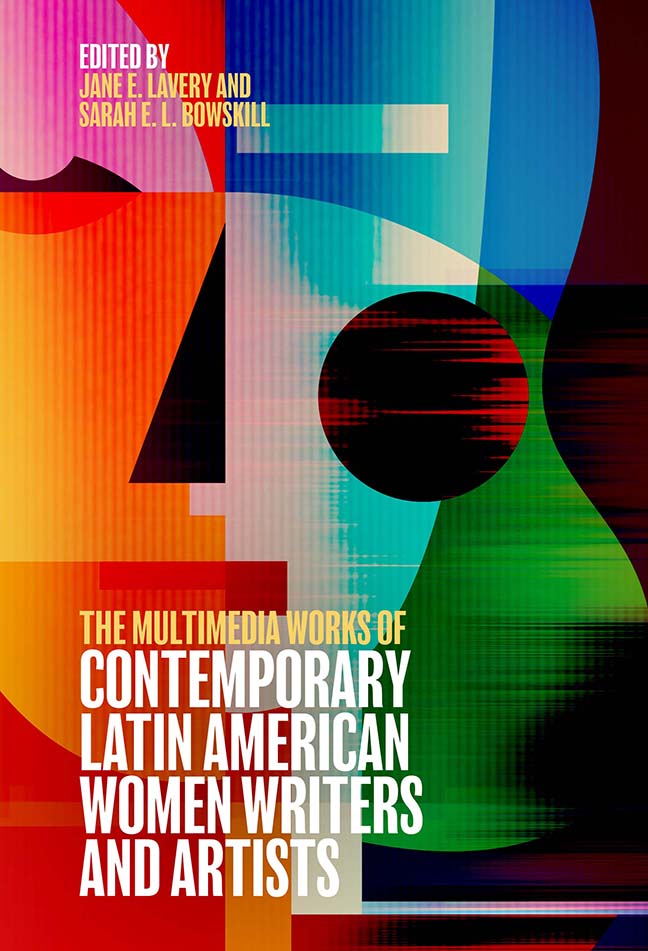Book contents
- Frontmatter
- Contents
- List of Illustrations
- List of Contributors
- Acknowledgments
- Introduction: A Crosscurrent of Contemporary Latin American Women Multimedia Writers and Artists
- 1 The Transliterary: The Novel and Other Multimedia Horizons Beyond (and Close to) the Textual
- 2 Commentary on Fe/males: Sieges of the Post Human (Transmedia Installation)
- 3 An Anthropophagic Ch’ixi Poetics
- 4 My Relationship with Artistic Creation Began with Words
- 5 Imagetext
- 6 Voices/Bodies
- 7 Redefining Meaning: The Interweaving of the Visual and Poetic
- 8 The Territory Is Home
- 9 Reflections on a Multimedia Practice
- 10 Digital Weaving
- 11 Eli Neira, Regina José Galindo, and Ana Clavel: “Polluting” Corporealities and Intermedial/Transliterary Crossings
- 12 The Digital Condition: Subjectivity and Aesthetics in “Fe/males” by Eugenia Prado Bassi
- 13 The Transmedia, Post-Medium, Postnational, and Nomadic Projects of Pilar Acevedo, Rocío Cerón, and Mónica Nepote
- 14 The Art of the Hack: Poets Carla Faesler and Mónica Nepote and Booktuber Fátima Orozco
- 15 The Places of Pain: Intermedial Mode and Meaning in Via Corporis by Pura López Colomé and Geografía del dolor by Mónica González
- 16 Words, Memory, and Space in Intermedial Works by Gabriela Golder and Mariela Yeregui
- 17 Fungibility and the Intermedial Poem: Ana María Uribe, Belén Gache, and Karen Villeda
- 18 Hypertext and Biculturality in Two Autobiographical Hypermedia Works by Latina Artists Lucia Grossberger Morales and Jacalyn Lopez Garcia
- 19 Dialogues Across Media: The Creation of (New?) Hybrid Genres by Belén Gache and Marina Zerbarini
- Bibliography
- Index
- Tamesis
5 - Imagetext
Published online by Cambridge University Press: 17 December 2023
- Frontmatter
- Contents
- List of Illustrations
- List of Contributors
- Acknowledgments
- Introduction: A Crosscurrent of Contemporary Latin American Women Multimedia Writers and Artists
- 1 The Transliterary: The Novel and Other Multimedia Horizons Beyond (and Close to) the Textual
- 2 Commentary on Fe/males: Sieges of the Post Human (Transmedia Installation)
- 3 An Anthropophagic Ch’ixi Poetics
- 4 My Relationship with Artistic Creation Began with Words
- 5 Imagetext
- 6 Voices/Bodies
- 7 Redefining Meaning: The Interweaving of the Visual and Poetic
- 8 The Territory Is Home
- 9 Reflections on a Multimedia Practice
- 10 Digital Weaving
- 11 Eli Neira, Regina José Galindo, and Ana Clavel: “Polluting” Corporealities and Intermedial/Transliterary Crossings
- 12 The Digital Condition: Subjectivity and Aesthetics in “Fe/males” by Eugenia Prado Bassi
- 13 The Transmedia, Post-Medium, Postnational, and Nomadic Projects of Pilar Acevedo, Rocío Cerón, and Mónica Nepote
- 14 The Art of the Hack: Poets Carla Faesler and Mónica Nepote and Booktuber Fátima Orozco
- 15 The Places of Pain: Intermedial Mode and Meaning in Via Corporis by Pura López Colomé and Geografía del dolor by Mónica González
- 16 Words, Memory, and Space in Intermedial Works by Gabriela Golder and Mariela Yeregui
- 17 Fungibility and the Intermedial Poem: Ana María Uribe, Belén Gache, and Karen Villeda
- 18 Hypertext and Biculturality in Two Autobiographical Hypermedia Works by Latina Artists Lucia Grossberger Morales and Jacalyn Lopez Garcia
- 19 Dialogues Across Media: The Creation of (New?) Hybrid Genres by Belén Gache and Marina Zerbarini
- Bibliography
- Index
- Tamesis
Summary
Poetry
has more to do with processes of thought than with literature, says Emmanuel Hocquard.
In how many ways can thought be represented as an associative process of images, sensations and concepts?
The literary does not only exist in verbal language, although that may be its primary material, as Roberto Cruz Arzabal has written.
The literary, the poet and essayist proposes, is the movement of a variable and flexible set of objects that activate, contain or modify the texts and the practices surrounding literature.
My work is an assemblage of texts and images created with this mental perspective.
in my writing there are ghosts
… and the screen is where they appear.
This ectoplasm that at one time emanated from objects: books, paintings, sculptures, CDs, posters, musical scores, radios, galleries and libraries, bookshops, cars and boats, staircases, countries, mountains, and people.
windows opened simultaneously: visual combinations:
Rembrandt and emoticons.
mixtures of sound, voice, noise, pop and symphonies, harps and tins.
A tangled web of forms and styles:
journalism and self-help, Sor Juana, Juan Gabriel, James Joyce, Amparo Dávila, “If you love someone …,” and Szymborska. Salvador Elizondo, Buddha, “Things you cannot miss out on,” marches and traffic. Sensationalist crime news. “A man gave a beggar something to eat, what happened next …,” the Witold Gombrowicz Congress begins, Susan Sontag, “A polar bear wanders through the streets and the Underground in London,” Review, the best books, videos, wines of the year, “We are beings of light,” #Ayotzinapa.
virtually ambidextrous
and if the real great step for humankind
was taken when we began to write with both hands?
Now that I remember that someone used to say “I’m left-handed,” or “they are right-handed,” I feel a sense of surprise. I see way in the distance those left elbows across the school desks, those right elbows suspended at the side of the tables, and I think, also at a distance, of those days when I used to practice my writing and use of words in notebooks with a fountain pen or a pencil. Therefore:
pen and paper = (Enter) = laptop.
And I could say
that from the moment I started to use both hands to write, something joined up, it fitted together, and did it all connect?
- Type
- Chapter
- Information
- Publisher: Boydell & BrewerPrint publication year: 2023

